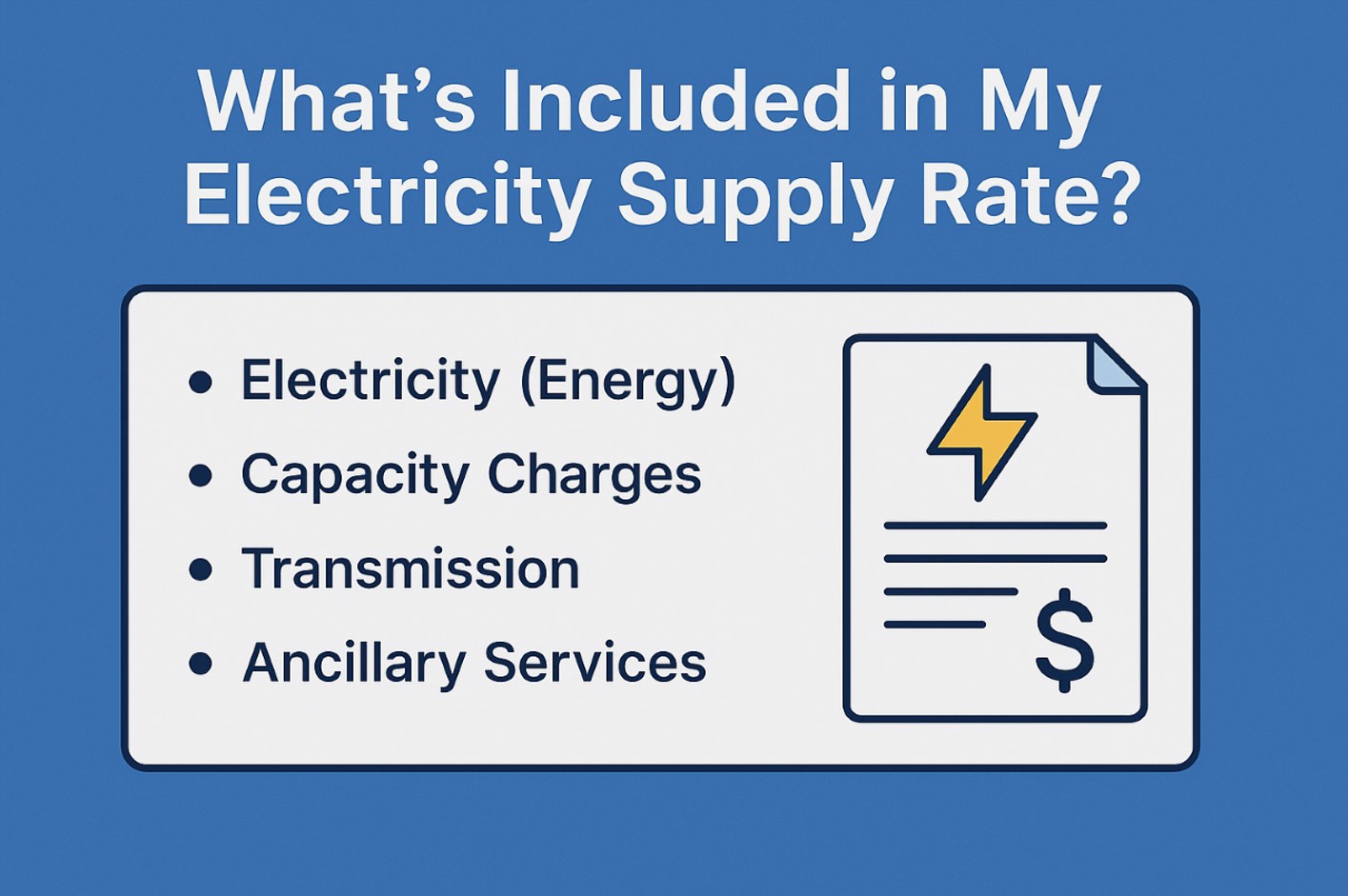Electricity Supply Rate

What’s Included in My Electricity Supply Rate?
Understanding what is included in your electricity supply rate is critical for any business looking to manage energy costs and avoid surprise charges. Many businesses sign energy contracts without knowing exactly what they're paying for. This guide will help break down what’s typically included in a supply rate and what may be billed separately.
What Is an Electricity Supply Rate?
The supply rate is the price you pay per kilowatt-hour (kWh) for the actual electricity your business uses. It is provided by a third-party supplier, not your local utility. This rate does not include delivery charges, taxes, or other utility fees.
What’s Typically Included in the Supply Rate?
When you receive a quote for a supply rate, it usually includes:
1. Electricity (Energy)
This is the base cost of the electricity supplied to your business. It represents the generation of the power itself.
2. Capacity Charges
Capacity charges cover your share of the cost to keep enough power available on the grid during periods of high demand. These are usually based on your peak usage during the previous year. Some suppliers include this in the rate, while others pass it through as a separate charge.
3. Transmission
Some contracts include the cost to move electricity from power plants to your local utility. In other contracts, transmission may be listed separately or included in your utility bill. Always confirm how this is handled.
4. Ancillary Services
These are grid support services (like reserves, voltage control, and frequency regulation). Sometimes they are bundled into the supply rate. Other times, they are passed through, which could result in unexpected costs.
5. Swing or Usage Bandwidth
Swing refers to how much your actual usage can vary from your estimated usage without being penalized. Contracts may include 100 percent swing, meaning you will not be charged extra for using more or less than forecasted. If swing is not included, you could face additional charges.
What’s Not Included in the Supply Rate?
These items are typically not included in your electricity supply rate and are instead part of your local utility’s delivery charges:
-
Distribution and delivery
-
Metering and billing
-
State and local utility taxes (in most cases)
-
Infrastructure and maintenance fees
You still receive a bill from your local utility, which covers these regulated delivery components.
Are Taxes Included?
Taxes vary by state and by supplier contract:
-
In New Jersey and Pennsylvania, many suppliers include the Gross Receipts Tax (GRT) and state sales tax in the supply rate.
-
In other states, taxes are often added on top of the rate and appear as separate line items.
Be sure to ask whether taxes are included so you can accurately compare offers from multiple suppliers.
One Bill or Two Bills?
Some suppliers offer utility-consolidated billing, where all charges (supply and delivery) appear on one utility bill. Others issue a separate bill for the supply portion. Confirm which billing method is being used to avoid confusion.
Questions to Ask Before You Sign
Before agreeing to a supply contract, ask the supplier these important questions:
-
Is capacity included or passed through?
-
Are ancillary services included?
-
Is swing or bandwidth included, and at what percentage?
-
Are taxes included in the rate?
-
Is transmission bundled or billed separately?
-
Will I get one bill or two?
Not all electricity supply rates are created equal. Two contracts with the same kWh rate can have very different terms. Understanding what is and isn’t included in your rate will help you avoid unexpected charges and make a better energy decision for your business.
If you’re unsure, always request a full contract summary or work with a trusted energy consultant to review the details like Bid On Energy - Click Here
